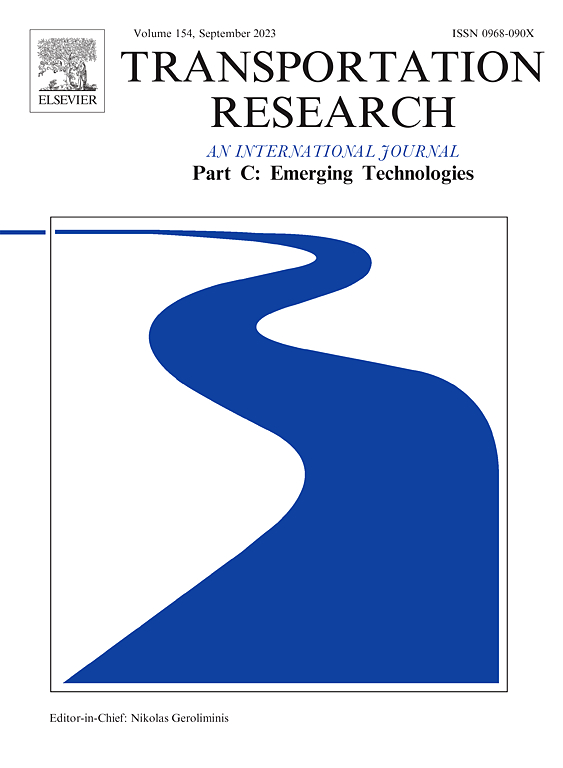Event-based models for the electric autonomous dial-a-ride problem
IF 7.6
1区 工程技术
Q1 TRANSPORTATION SCIENCE & TECHNOLOGY
Transportation Research Part C-Emerging Technologies
Pub Date : 2025-02-01
DOI:10.1016/j.trc.2024.104896
引用次数: 0
Abstract
On-demand transportation systems can serve to complement standard scheduled public transport in areas with low population density or to address the mobility needs of handicapped and elderly people. In this paper, we address the electric autonomous dial-a-ride problem (e-ADARP). In the e-ADARP, vehicle routes for serving user requests consisting of pickup and drop-off locations are determined. The objective is to minimize a weighted combination of travel distances and excess user ride time. Since it is assumed that an electric and autonomous vehicle fleet is used for the ride-sharing service, in addition to vehicle capacity, time windows, and maximum user ride times, also battery capacity constraints have to respected. We develop a mixed-integer linear programming (MILP) model for the e-ADARP that relies on an event-based graph. By using an event-based graph, capacity, pairing, and precedence constraints are implicitly applied. Several valid inequalities from the literature as well as newly developed ones are used to strengthen the model. In comparison to existing exact methods for the e-ADARP, we obtain competitive results on a set of available benchmark instances: we provide several improved upper and lower bounds and provide optimal solutions to previously unsolved instances. Furthermore, we analyze the impact of the capacity setting as well as different weight combinations on solution time and demonstrate the effect of battery start and end levels over several periods.
求助全文
约1分钟内获得全文
求助全文
来源期刊
CiteScore
15.80
自引率
12.00%
发文量
332
审稿时长
64 days
期刊介绍:
Transportation Research: Part C (TR_C) is dedicated to showcasing high-quality, scholarly research that delves into the development, applications, and implications of transportation systems and emerging technologies. Our focus lies not solely on individual technologies, but rather on their broader implications for the planning, design, operation, control, maintenance, and rehabilitation of transportation systems, services, and components. In essence, the intellectual core of the journal revolves around the transportation aspect rather than the technology itself. We actively encourage the integration of quantitative methods from diverse fields such as operations research, control systems, complex networks, computer science, and artificial intelligence. Join us in exploring the intersection of transportation systems and emerging technologies to drive innovation and progress in the field.

 求助内容:
求助内容: 应助结果提醒方式:
应助结果提醒方式:


